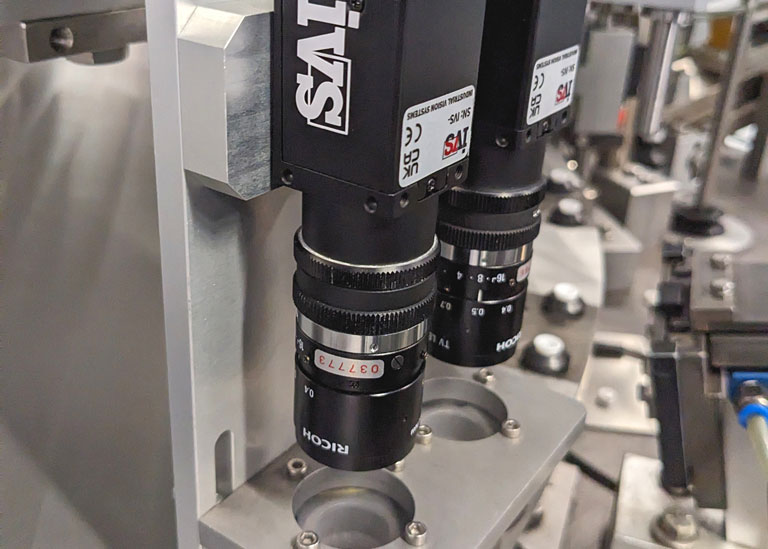The latest generation of inhalers are complex devices made up of many constituent parts. Each is moulded, machined, stamped or 3D printed through a whole series of steps prior to arrival at the final assembly of the full inhaler medical device. It’s critical at this point that products arrive 100% automatically inspected, but also that the whole assembly is checked as it runs through the manufacturing process. IVS has been involved with inhaler production for many years, keeping an eye on quality 24/7 with precision vision systems. The latest generation of IVS vision allows for the automated checking of even more complex inhaler products through the use of innovative optics, lighting and vision algorithms – increasing yield and guaranteeing quality.
One such large multi-national medical device company tasked IVS with adapting vision technology to specific application requirements relating to inhaler production. As the product is assembled, some aspects of the valve, body and o-ring need to be checked at speed to confirm adherence to tolerances and correct assembly, along with the ability to reject gross defects and particulates found in the device. This last element is especially critical for use in the pharmaceutical industry. In addition, all vision systems are validated to the ISPE GAMP/FDA protocols to confirm adherence to all necessary regulations and approvals. Validated vision systems are critical for inhaler production.
The vision system consists of multiple vision cameras mounted around the dial plate to allow synchronous inspection of several elements of the build process. Having cameras at varying angles with specific lighting arrays allows inspection in difficult-to-access areas. Each camera must be triggered and processed, and results must be given back to the Programmable Logic Controller (PLC) within the two-and-a-half-second cycle time for the machine, running two up at a time. Connection to the PLC is through industrial ethernet, with image data and results being sent to the factory information system to allow overall shift information to be easily accessible to the production management.
Statistical process control traces are available on the main vision system monitor, mounted on the production machinery. At a glance, operators can see the trends from the production process, such as if the assembly build is slowly going out of control, and can take corrective action at speed. The IVS vision cameras become the “eyes” of the operators, allowing quick determination of process control. This allows a single operator to cover the operation and maintenance of a number of production processes, which previously would have been done by two or three operators.
IVS vision systems have proved to be a critical element in the production of inhalers, from the inspection of o-rings and inserts, to the complex assembly of the product. All the while, it guarantees that the quality of the medical device meets industry and production standards.
